apskarp
35 posts
Sep 20, 2009
5:39 AM

|
Hi,
I have been studying and experimenting harp tuning for some time now, and tuned some of my harps (I like how my Hohner Blues Harp in the key of C feels nowadays - can get the 4,5,6 overblows with it too). I just remembered yesterday that I have actually my late grandfathers tremoloharps somewhere in the house and decided to find it and restore it.
I actually got that harp from my aunt few years ago when I decided to start learning blues harmonica. At that time I didn't know anything about harps, and I was quite surprised when I noticed that in my harps there seemed to be two rows of holes instead of just one. In the lessons I found from the internet there were only one row... :) Anyway, I figured the thing out and bought diatonic harmonica putting the grandpa's old harmonica away. It wasn't sounding very good and it good have used some cleaning and stuff like that which I couldn't do.
Well, now I think that I'm ready to try out some tremolo harp playing too and I have also some skills to restore the harp for that. Actually it's two harmonicas: Hohner's C-dur and A-minor connected with hinge together. There are 10 holes in each one - I'm not sure about the tunings as I decided to clean it first before playing, but obviously the other one is in minor tuning and the other in dur. The comb is wooden and has some dark colour painting/lacquer that has pattered on the surface.
What I have done so far:
I disassembled the reedplates from the comp with the help of David Payne's video. No problems. I was surprised to find that actually the wood looked pretty good and wasn't as dirty I had suspected. My grandfather was very spot-on guy and used to maintain his gears very carefully - no matter was it the harp, the car, the shot-gun or whatever. Another surprise was that the holes had kind of a "runways" on the blow reed side of the hole (just on the lowest holes). I guess it directs the air-flow somehow better this way.
Next thing was that I flatsanded the combs and also sanded away the little bit of dirt that were in the holes. After that I used an artists brush to work the comb with paraffine oil/beeswax mixture to seal it. Now they are drying.
The reedplates I soaked on a bowl with citrus acid on it. (The farmasian was run out of the oxygen cleaner but I thought to try this.) The reedplates are still there, let's see how it goes..
I'll put updates on this as I go forward. If you have tips etc, those would be appreciated.
|
apskarp
36 posts
Sep 21, 2009
1:19 PM

|
Ok, some updates:
I let the reedplates & coverplates to soak in the citris acid for 24 hours. And also the comb to dry out from the paraffin&beeswax mixture the same time. After the soaking some of the rust etc was gone and the plates looked better. I rinsed them and dried with paper towel. However, they were still looking old and tarnished.
I adjusted the reeds and assemled the the harmonicas. Did some experiments and adjusted the reeds again. Then I remembers that somebody said he had used pencil eraser rubber to polish the reeds and I gave it a shot. The result was unbelievable! The reedplates (and reeds) really started to look like new. Unfortunately I had already assembled the combs and I didn't want to disassemble them again so I couldn't make it as perfect as otherwise, but still the plates looked good. And I treated the coverplates the same way and really got improvements there too.
So, the final result was that I got the harmonicas to play again and improved the looks too! The next time I do this I remember to use the rubber before assembling the combs and adjusting the reeds.. :)
|
ElkRiverHarmonicas
222 posts
Sep 21, 2009
2:42 PM

|
How is the tuning? The tremolo ought to be slow at the low end and get gradually faster to the high end.
----------
www.elkriverharmonicas.com
|
nacoran
186 posts
Sep 21, 2009
3:01 PM

|
I wouldn't even know where to start with a tremolo. I've taken one apart to unjam a reed and to knock a couple dents out of the cover.
Do you have pictures? What your describing sounds doesn't sound like a tremolo, it sounds more like pair of harps hinged together for chromatic play, although you can do that with a pair of tremolos.
How do you tune tremolos? Are the reeds above and below the pitch you want or is one the pitch you want and the other higher or lower? I've heard Asian and German tremolos are tuned wetter or dryer than each other, but I don't know which one is which. What is the tuning?
|
ElkRiverHarmonicas
223 posts
Sep 21, 2009
3:38 PM

|
Not chromatic. They are there together simply for chords. A minor and C major (Dur) have the exact same notes in their scales, only in different places, thus giving you extra chords, but you would have the exact same notes available on one as the other.
It's a tremolo, but it's primarily geared for chords. You would have C, G, G7, Dm, Am, Em7, etc.
There is a possibility that this is not a tremolo and is instead an octave. If you get tremolo in some places, no tremolo in others, it was originally an Octave harp. The tremolo places are where it's drifted out of tune.
Dave
----------
www.elkriverharmonicas.com
|
nacoran
189 posts
Sep 21, 2009
8:05 PM

|
Elk, I'd never heard of any hinged harps besides bass harps and the C/C# style valveless chromatic style like the Huang Musettes. The more you know.
|
ElkRiverHarmonicas
224 posts
Sep 22, 2009
4:46 AM

|
They did have a lot of hinged tremolos and octave orchestral harps back in the day and a lot of chord harps still are. The sextet is the one we usually think of... a wheel of six harmonicas hinged together. Another thing you get with this setup is some of the missing notes in the first octave of the C harmonica. I use two octave harps in a sextet when I play "Elk River Blues." There's one passage that, (say we're playing 4th position on a C) really needs the lower A that isn't there... I would pop over to an F harp to play a short passage with the lower A in it. I think the same setup with an Am harmonica would work even better than that.
You can still get the Seydel Concerto hinged as a duo, quartet or sextet.
Dave
----------
www.elkriverharmonicas.com
|
ElkRiverHarmonicas
225 posts
Sep 22, 2009
5:13 AM

|
Tuning double reed info is here:
http://www.patmissin.com/tunings/tun10.html
Usually, when people ask "how much is my harmonica worth?" It's worth jack. This one is a little better than jack. If it's in decent shape, might go for $100 on Ebay. I don't know. Presumeably it's worth more to you since it was grandpa's, but I thought it might be nice to know you have a somewhat rare piece there.
----------
www.elkriverharmonicas.com
|
apskarp
37 posts
Sep 22, 2009
11:54 AM

|
Hi,
Thank's for the information Dave! I took another look at the tunings and the harp is actually an Octave harp - not tremolo. I haven't got change to practice the tunings yet, but this is good reason to start learning...
The C-dur harp has the same tuning as the standard diatonic has and the Am has something else (of course) - I'll look into it later. I might also put some pictures here if I figure out how to do it..
|
apskarp
38 posts
Sep 22, 2009
12:45 PM

|
Here are some images from the project...
The C-dur harp before the restoring:
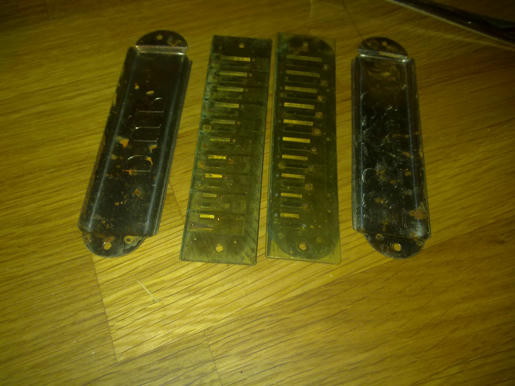
Here's some close up from the comb before treatment where the hinge can be seen(note the home made nail):
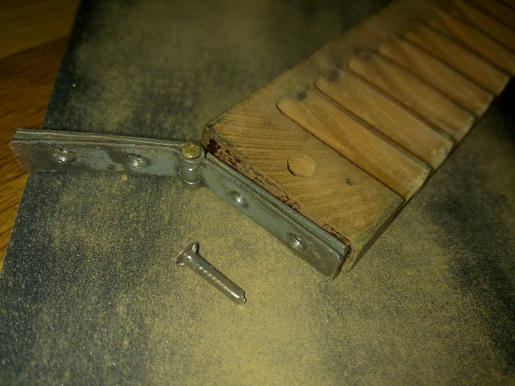
The combs after the treatment. You can see clearly those runways that are on the blowreed side - propably to get some better chamber for the draw reeds:
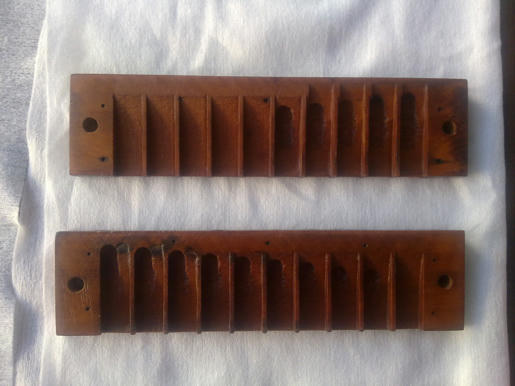
The harps assembled when only the bottom one is polished with eraser rubber:
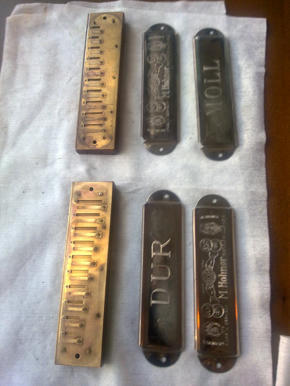
And the harps assembled and ready to be played(without the hinge assembled):
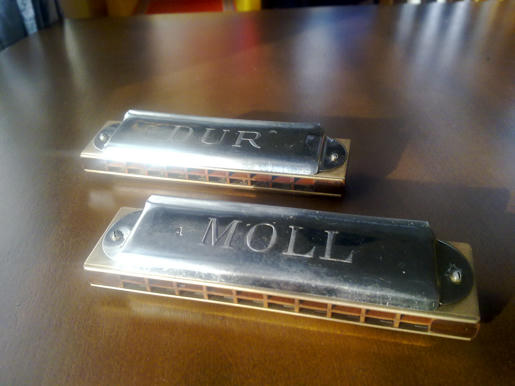
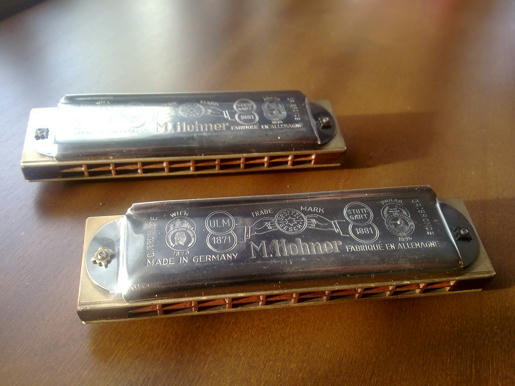 Last Edited by on Sep 22, 2009 12:50 PM
Last Edited by on Sep 22, 2009 12:50 PM
|
ElkRiverHarmonicas
229 posts
Sep 22, 2009
2:23 PM

|
Ok, yes, these harmonicas are valuable, but Harmonica valuable and treasure are two different things. You might get $100 on Ebay maybe if you had it listed right. Again, I'm sure it's worth more than that to you. But $100 for an old harp is a valuable harmonica.
This is essentially a duo of a Hohner Auto Valve with a different cover, probably from around 1930 - 1935.
What I'm not understanding is why these aren't valved. Were there windsavers at one point? They would have been leather, somebody probably took them off. You really ought to valve it.
This would have been meant as a chord harp. Around that same time, Al Fiore made his first chord harp out of a bunch of these. That's pretty much what these were made for, you could put six of them on a wheel and with the MOLL and DUR in such big letters, you could rotate and find your chord quickly.
I've seen pictures, but never owned one, but the coolest probably are in the key of H Moll or H Dur... keys known outside of Germany as B minor and B major.
When you tune octave harps, you want to tune for zero beating, but you want the low reed of the pair to be almost as sharp as you can get it without beating or sounding off. Reason being, when you play, the more breath force you use, you bend down the lower octave's reed, making it flatter. If you blow gently and it's fine and then it beats when you play, sharp the lower reed just a little and that will fix the problem.
----------
www.elkriverharmonicas.com
Last Edited by on Sep 22, 2009 2:28 PM
|
Aussiesucker
357 posts
Sep 22, 2009
4:20 PM

|
I'm not into restoration but I have a couple of new Tremolos - Suzuki 2 Timers in C & A.
Would be interested to know if they would have any application in Blues music? My belief is they would not so much as a solo instrument but possibly in a slow blues as a back up setting a scene/ feeling eg like shivery cold weather.
I bought mine as I really love the playing of Mickey Raphael (Willie Nelson) and he effectively uses tremolos on some tracks.
|
nacoran
195 posts
Sep 22, 2009
5:38 PM

|
Tremolos don't have a very bluesy sound, but they still have a really nice tone for all sorts of other music. They could work well in an interlude where you changed styles- break out some classical mid-blues song or some Irish jigs. It can be fun to take the same theme and play it in a couple different styles.
|
ElkRiverHarmonicas
230 posts
Sep 22, 2009
8:31 PM

|
Nacoran,
I'm gonna change your mind about the tremolo. I believed that same misconception before July 25. After that, I have had blues tremolo on my brain.
Steve Williams went down to the West Virginia state championship with me (he was my ride). He's a tremolo player ONLY, although he plays fiddle, guitar, mandolin, dobro, etc.
Steve, who never really played any blues, except bluegrass, took a solo on his tremolo during the before-contest jam on Robert Johnson's "Dust My Broom."
I was up there playing 48 chord and I thought "Holy s...! this is something I've NEVER heard!"
So since then, I've kind of been nudging Steve, showing him some possibilities, flipping the double sided to get missing notes, bending notes... going to be teaching him soon how to overblow. Tremolos are easy as hell to overblow, provided they aren't the ones with the small holes between the dividers, although you can fill those holes in. Ordinary overblow, you have to shut the blow reed down, then start the overblow. On a tremolo, you don't have to screw the blow reed, just lip block it away and overblow the draw reed by itself.
Steve's Blues Tremolo solo starts at 0:58. His tremolo is a custom I made for him out of this Hohner Donauwellen that was made around 1910.
The clip is located here:
hhcwv.com/mp3/wv2009/DustMyBroom.mp3
How did Steve do it? He didn't know he wasn't supposed to be able to do it. He just did it.
Now, Apskarp, what you can do is this, half valve the low octave reedplate, fully valve the high reedplate. Thus, when you play this thing, you can lip block the bottom row and play EXACTLY like a blues harp. You can unblock the bottom row and covert to a true octave harp sound. It is awesome as hell. This harmonica was meant to be valved, was originally valved...
----------
www.elkriverharmonicas.com
Last Edited by on Sep 22, 2009 8:39 PM
|
apskarp
39 posts
Sep 22, 2009
11:50 PM

|
Actually the harp is quite playable without the valving, too. Especially when playing chords - there aren't too much air leakage. But if it's meant to be valved then it will of course be even better.
That lip blocking was a great tip - I tried it a little bit and found that I can play it like blues harp when blocking the bottom row. And if I block the upper row I can play the same passage one octave higher! And then of course play the both and get a free octave without tongue blocking. BUT, if I TB for octaves I can get actually 3 octaves playing the same time! (there are actually 4 reeds playing but two of them are identical - the bottom 2 hole and higher 4 hole)
So this would be very good instrument for blues too and as I sing most of my songs in the key of G the C-dur is the best key for me in 2nd position... I haven't done any valving before, but this would be a good project to learn that too.
Btw, I have the original box for the harp too, which is pretty cool:
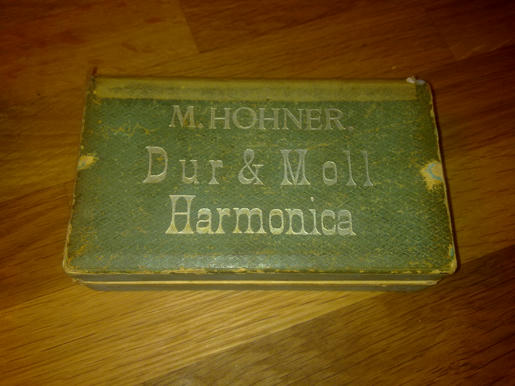
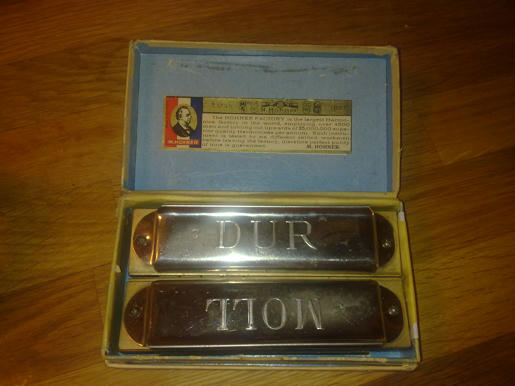
The bottom of the box has actually the selling price also (2200mk), the keys and "real brass plates" certificate in it:
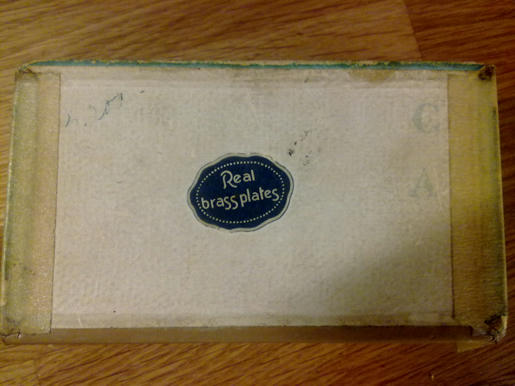
It's really not possible to say what the price was compared to the value of money these days - it depends so much on the year it was bought. Nowadays Finland uses euros, but the original currency was marks. If it was bought before war the amount equals 750euros, if in the 50's its something like 50 euros..
|
Aussiesucker
361 posts
Sep 23, 2009
12:14 AM

|
Yoiks! I think the price on that relic cannot be correct. I would imagine the price to have been more like 22 marks. Why dont you email Hohner as I have found they respond.
|
apskarp
40 posts
Sep 23, 2009
2:48 AM

|
Well, it's just really about the inflation and such things that affect the value of money. I found a calculator from some finnish bank's website and the value of money has really varied a lot during last 70 years or so. In the year 1962 the 2200 marks corresponded about 45 euros of current day money - the next year something happened and the current day value would have been 4000 euros! In the 1970 the value would have been 2000 euros.
It's also in english: www.rahamuseo.fi/arvo_laskuri/laskuri_web.html
I think this piece was bought from Finland and priced here in some local music store, so I don't think Hohner can really say what the price was when we really don't know even the year it was originally bought. (Of course it would be possible that the price was actually 2200 pennies but the ,- in the end means that it is actually marks, not pennies)
Last Edited by on Sep 23, 2009 3:00 AM
|
ElkRiverHarmonicas
234 posts
Sep 23, 2009
5:44 AM

|
I'm sticking with early 30s. The German currency was very unstable at the time. In 1923, the mark was one trillionth what it had been three or four years before. The currency was brought back to reality at least in the late 1920s. But I don't think you would have seen a really strong mark until the mid 1930s.
2,200 marks in the early 1930s does not sound like an unreasonable price at all for these fine harmonicas.
----------
www.elkriverharmonicas.com
|
nacoran
199 posts
Sep 23, 2009
12:20 PM

|
Elk, that's a great sound. I'd heard some people get bends out of tremolos, but didn't want to recommend something I couldn't confirm. I've tried isolating a single hole (just the bottom reed) to see if I could bend it, but haven't had much luck. Still, I love them for certain sounds. With some tongue blocks you can sound just like a accordion. The three I have are all Asian (the two Huang Musettes in C and C# and a Blessing in C). I've heard Asian and German tremolos sound different. Do you know which were in that quicktime clip?
|
ElkRiverHarmonicas
235 posts
Sep 23, 2009
12:33 PM

|
German, it was a Donauwellen model Hohner made around 1910. The asian tremolos are a lot "drier" German tremolos wetter usually.
----------
www.elkriverharmonicas.com
|
apskarp
46 posts
Oct 25, 2009
5:33 AM

|
Hello,
This story has continued. I actually got a 35-year-old tape from my father where both my mother's and father's parents met for the first time. It was just about a year before I was born. My mother's father played that very same harmonica on that tape and my father's father (who was half a gypsy) sang some sad finnish gypsy songs on it. (Sadly my father's father passed away just two months before I was born.)
It was awesome to hear that tape especially when I had just been restoring that very same harp. Here's a clip from that tape: http://www.mediafire.com/?nkhztkucyom
Last Edited by on Oct 25, 2009 6:00 AM
|
apskarp
93 posts
Dec 27, 2009
1:41 AM

|
Hi,
Some update on this. I was visiting my grandmother on christmas eve and played her some harmonica. She said that actually my grandfather's father played harmonica too. Propably he taught my grandpa to play too when he was a kid. And actually that harp I restored was originally my great grandfather's harp!
So I think you are propably right Dave, it may well be early 30's harp that my great grandfather bought for himself.
It's kind of funny that we have so many generations of harp players in our family (from my mother's side). And actually my 2-year-old son plays it too. So it must run in our genes.. ;)
EDIT: Also the six corner star in the middle of the lower coverplate suggests that these are pre-war harmonicas - at least according to Richard Sleigh's pdf about marine bands..
Last Edited by on Dec 27, 2009 2:41 AM
|
barbequebob
252 posts
Dec 27, 2009
6:32 AM

|
There was a post on this thread that a tremelo harp isn`t very bluesy. I personally use a Hohner 2409 tremelo harp on the Slim Harpo classic "Raining In My Heart," using carefully placed bends (bending on a tremelo harp is much like doing bends on a chromatic or a 1/2 valved diatonic, where you have to ease your way into it or it will choke up and blank out). Jerry McCain, who`s mainly known for a 45 that came out in the early 60`s that featured an instrumental called "Steady" with the flip side being made famous by the T-Birds, "She`s Tough," made several harp instrumentals in the 60`s using a tremelo harp played in 3rd position such as "728 Texas," "Hot Nuts," and "Woodpecker."
----------
Sincerely,
Barbeque Bob Maglinte
Boston, MA
http://www.barbequebob.com
CD available at http://www.cdbaby.com/cd/bbmaglinte
|
apskarp
289 posts
Jul 29, 2010
10:34 AM

|
I'm starting to work with this harp again. Some thinking about the half-valving. So is the idea that the lower reedplate (the one on top), is valved so that the draw reed which is higher one is valved and the blowreed isn't...?
Yeah, it must be so, as they are in the same chamber in an octave harp. It's a bit confusing as I'm used to think about the bottom reedplate as the draw reeds (in the holes1-6) but here the reedplates are actually duplicates so that each one has both the blow & draw reeds in it - the bottom plate is exactly the same, just one octave higher...
----------
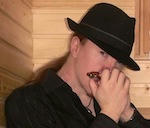
Youtube
Hoodoo Sauna
Blog
|
isaacullah
1099 posts
Jul 29, 2010
10:47 AM

|
I just bought a vintage Auto Valve from a thrift store down in Tucson. I can confirm that it's "fully valved" in that both blow and draw reeds are valved. Holes 7 and up on the low octave plate are fully unvalved,and holes 5 and up on the high octave plate are fully unvalved. The harp is post war (no star), but is older than the 80's for sure. It was in it's original paper box, and the original price tag is still on it. It sold originally for $5.50!!!! I believe a new auto valve goes for about $85 these days. I paid $25 for it. It was barely barely ever played. I cleaned it up with some rubbing alcohol, reset the gaps, and it plays like a dream! This is my first multi-plate harp (ie. octave), and it is taking some major adjusting in my attack and umbuchure, but I'm digging the sound that I'm getting! It's REALLY easy to pull one of the reeds in the octave pair down out of tune enough to get harsh beating. You have to be VERY gentle on your breath pressure to make sure both notes sound and are in correct octave tune.
----------
------------------

View my videos on YouTube!"
|
MrVerylongusername
1154 posts
Jul 29, 2010
10:50 AM

|
OT: Regarding German hyper-inflation
somewhere in my coin collection I have a one million mark note. My half-German grandfather told me it would probably have bought a dozen eggs!
|
AC
16 posts
Jul 30, 2010
1:10 PM

|
Having lived in Europe growing up I have seen a lot of pricetags that left off the decimal notation. So 2200mk could have meant 22.00mk and I think it is very likely it did. Of course this is just a guess and I'm not sure of the history of the currency (inflation especially).
|
ElkRiverHarmonicas
523 posts
Jul 30, 2010
9:35 PM

|
I've got some million mark notes I picked up at a Flohmarkt in Austria. They are cool.
AC, you've got a point. The harmonicas look to be mid 1930s. The nazis would have had the currency stablized by then, maybe 5 or 7 marks to the dollar at that point. 22 marks would make sense, that was a high-end harmonica of its day.
I'm not going to look through all my posts in this thread to see if I mentioned this, but I don't think it's a tremolo. I think they are octave harmonicas. I've never seen a tremolo with a Knittlinger comb (the Vienna comb is what you normally associate with Tremolos)
Dave
----------

www.harrisonharmonicas.com
"There are only two things money can't buy - true love and homegrown tomatoes." - Lewis Grizzard
|
apskarp
292 posts
Jul 30, 2010
11:06 PM

|
Yes, it is an octave harp as you said earlier Dave. About the currency, it wasn't bought from Germany but from Finland. Before the Eurepean Union we had marks here in Finland too, but of course it was totally different currency than German marks..
Now that we know it was mid 1930's harp I can calculate the relative price in today's currency from the: http://www.rahamuseo.fi/arvo_laskuri/laskuri_web.html
It seems that the relative price was about 700 euros. Of course it doesn't mean it cost was that much - it just means that you had to be pretty wealthy to afford one. the ,- in the end is actually the decimal notation. If it would have been 22mk it would have marked like this 22,00- whereas 2200mk is marked like this 2200,- The pennies are left out as they are just zero's (2200,00-).
Of course there could be other explanations for the price in the cover box - perhaps it was bought from Sweden for example..? Or somebody brought it as a gift from somewhere. Or perhaps it was a payment of some job he did. Endless possibilities.. :)
----------

Youtube
Hoodoo Sauna
Blog
|